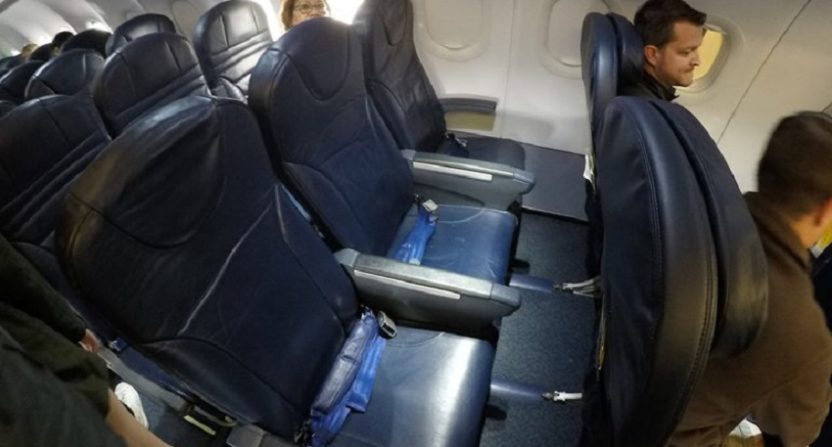Comedian Louis C.K. has a famous bit where he points out that modern society features a lot of complaints about airline travel, without recognizing the wonder of what we actually get to do.
But that clip is a few years old, and also Louis CK hasn’t flown coach in years. (Or so I assume. I wouldn’t either, if I were him.) At the very least he hasn’t flown Frontier or Spirit, airlines that only make money by cramming human beings into the tightest quarters imaginable.
Frontier Airlines Tells Customers To Just Fucking Deal With It https://t.co/deLXGpwCrB pic.twitter.com/SRAnl3axFF
— The Onion (@TheOnion) June 26, 2017
There are certainly tradeoffs; travel to many places is cheaper than ever, which allows more people to partake. That’s good! But at the same time, there has to be a standard, or we end up with ideas like this one from VivaColombia, that would have seen passengers standing for flights in order to better take advantage of cabin volume:
“There are people out there right now researching whether you can fly standing up,” VivaColombia’s founder and chief executive William Shaw told the Miami Herald.
“We’re very interested in anything that makes travel less expensive.”
Airbus first started discussing the possibility of standing room flights back in 2003 when it came up with the concept of a vertical seat that would allow passengers to stand while being braced.
And that’s not the first time it’s come up, although like those other instances, it looks like standing room won’t be a thing quite yet, either:
In 2010, Irish no-frills airline Ryanair announced plans to offer discounted tickets — as low as $7 — to passengers willing to stand on flights…Even Chinese carrier Spring Airlines discussed introducing vertical seats as recently as two years ago. So far none of these ideas have taken off, and it seems like VivaColombia’s ideas may also fall short.
Discussing the idea on Colombian radio, the country’s Civil Aviation Director Alfredo Bocanegra said it was not going to happen on his watch.
“People have to travel like human beings,” Bocanegra said.
Indeed they do, Mr. Bocanegra, which is why you’d think America’s equivalent powers-that-be would be on the forefront of ensuring American companies provide more humane conditions for their passengers. Unfortunately, the FAA had no intention of doing so, and still might not want to. But a court ruling is forcing them to at the very least consider it:
In a ruling on Friday, one of the judges called it “the case of the incredible shrinking airline seat”.
The Flyers Rights passenger group challenged the Federal Aviation Administration in court after the agency rejected its request to write rules governing seat size and the distance between rows of seats.
A three-judge panel for the federal appeals court in Washington said the FAA had relied on outdated or irrelevant tests and studies before deciding that seat spacing was a matter of comfort, not safety.
The judges sent the issue back to the FAA and said the agency must come up with a better-reasoned response to the group’s safety concerns.
That’s welcome news, as the space provided really does feel incredibly tight, especially if you’re a bigger person. I’m about 6 feet tall, and far from obese, and most cabins feel incredibly cramped and claustrophobic. And there’s no exiting quickly, either, on some of these flights. In an emergency situation, it does seem like a potential hazard; it takes me a few moments to twist my way out of the seat row as it is, much less during a panic-filled evacuation procedure.
The FAA, of course, isn’t compelled by this ruling to actually do anything, but it does open them up to potential future challenges should they continue to refuse to do anything. That’s good news for travelers, who are already seeing more hassles at the airport as it is.
TSA now demanding any device bigger than a cell phone be scanned seperately
[The Guardian]







